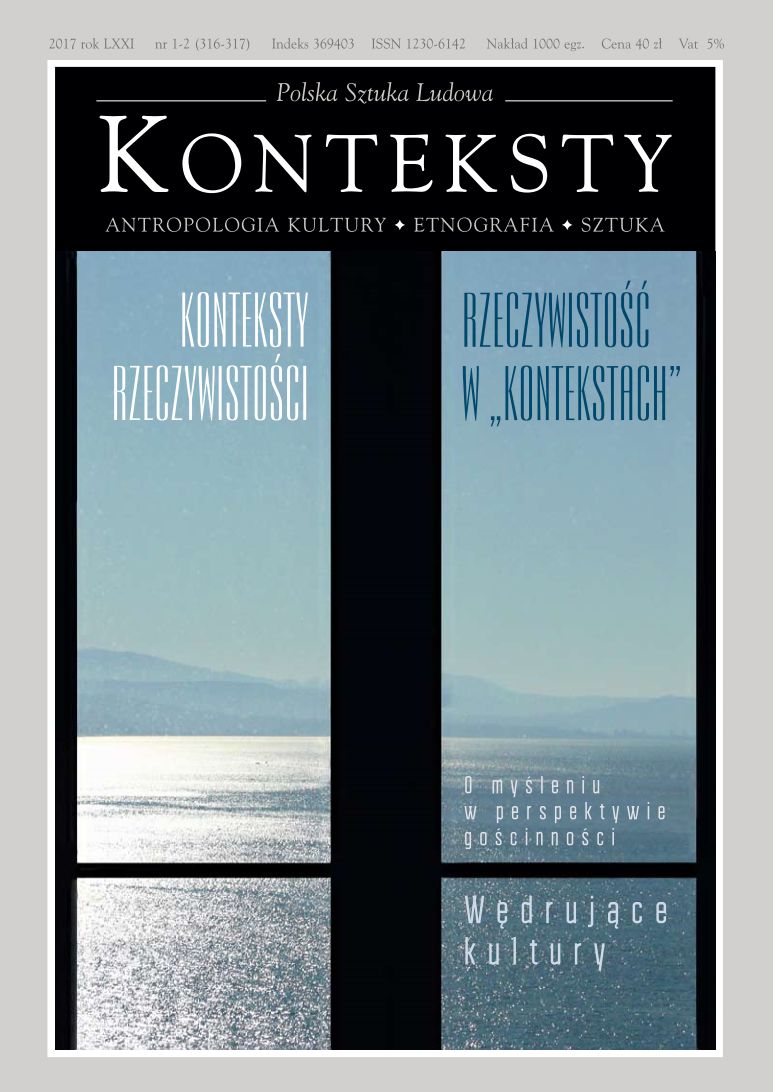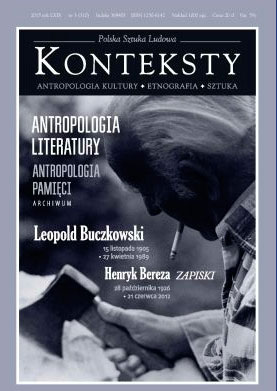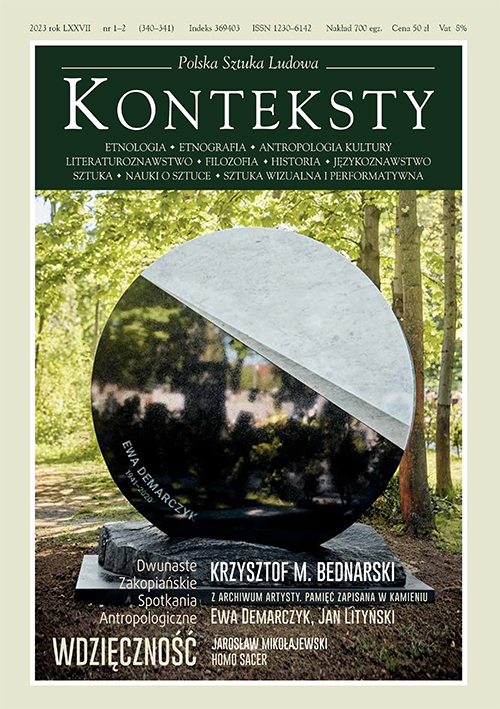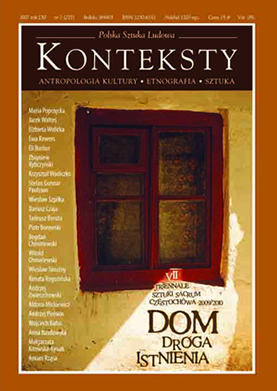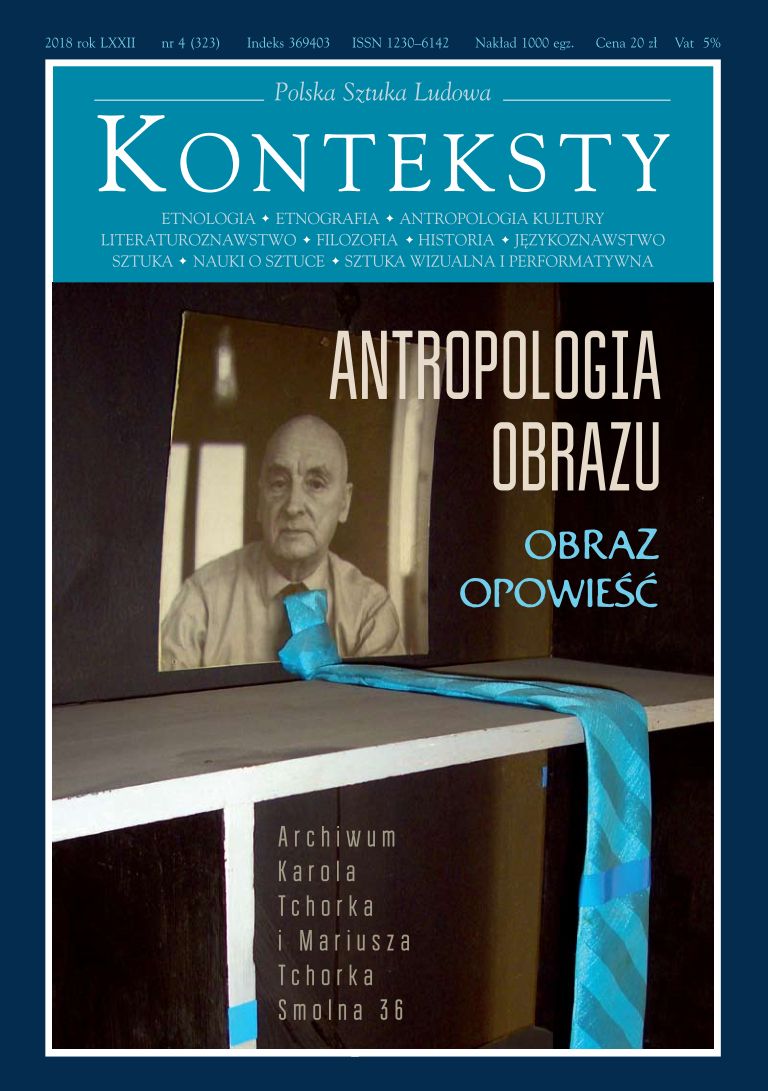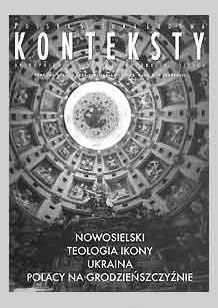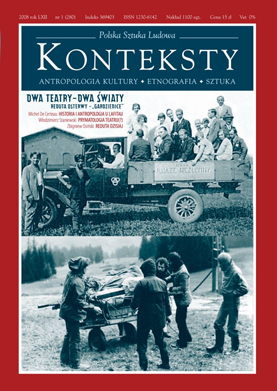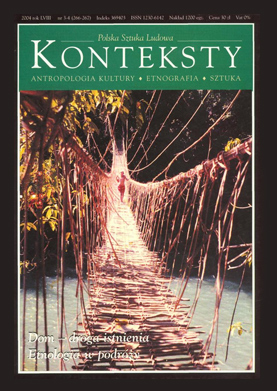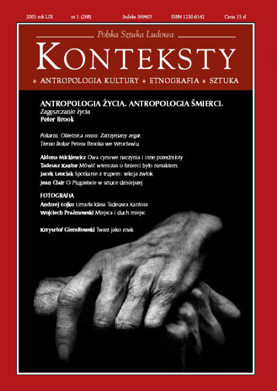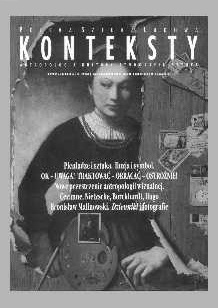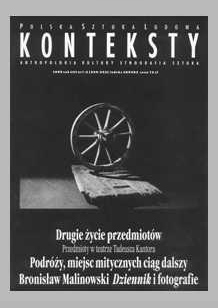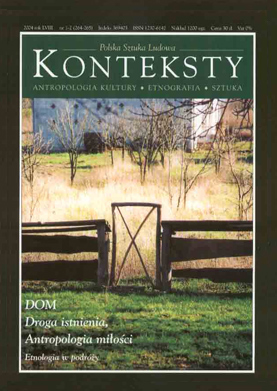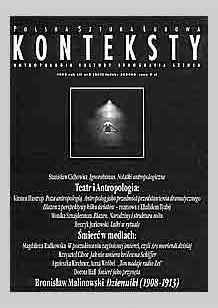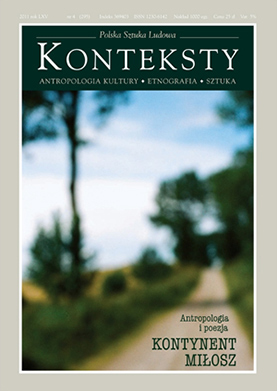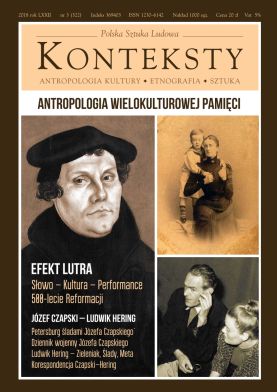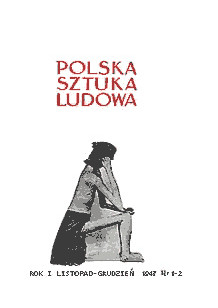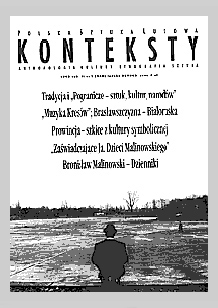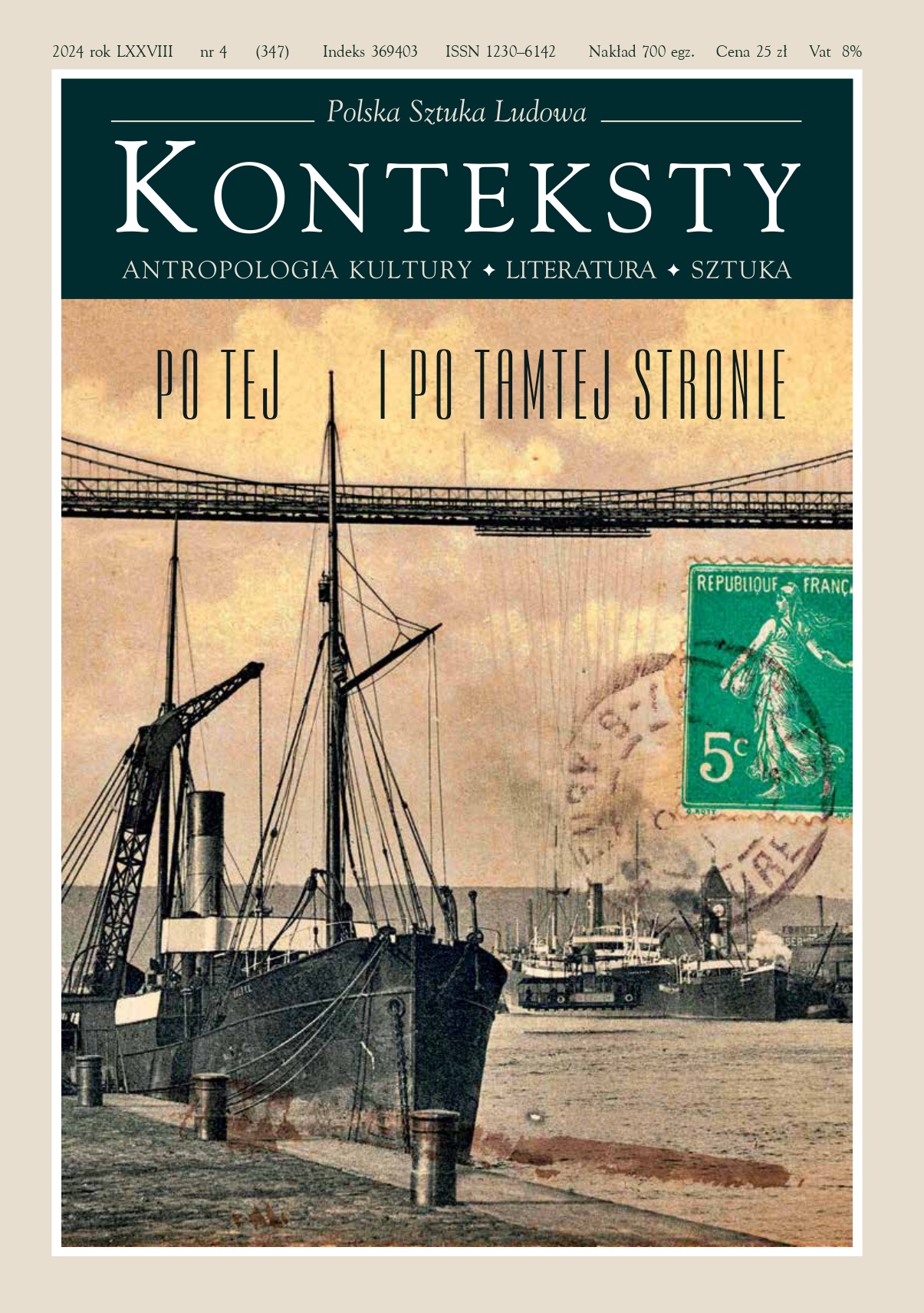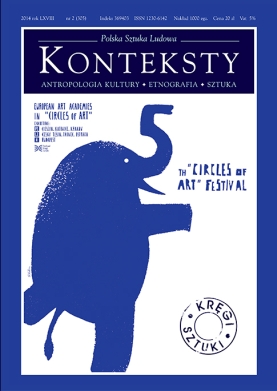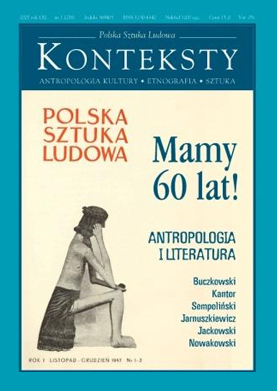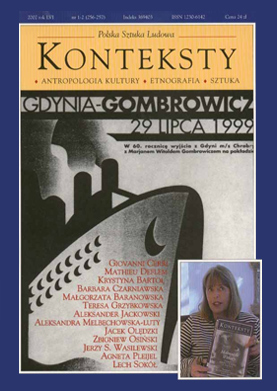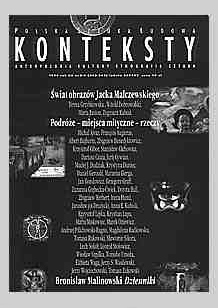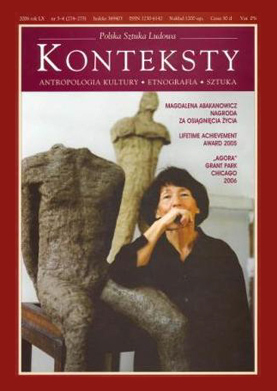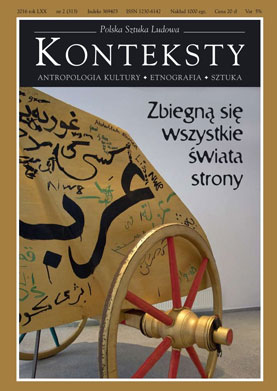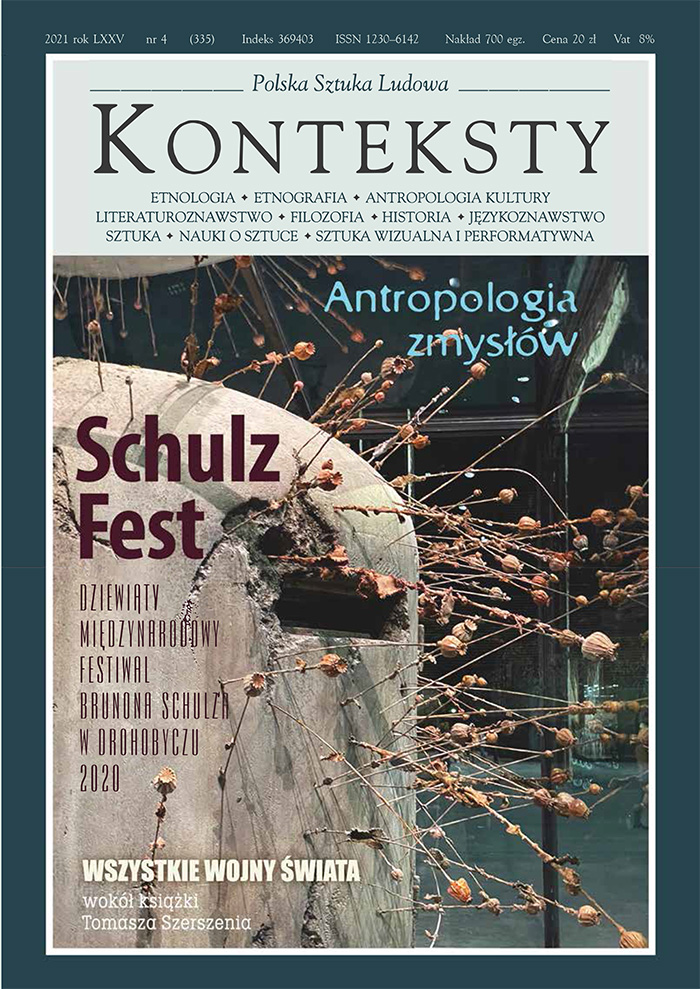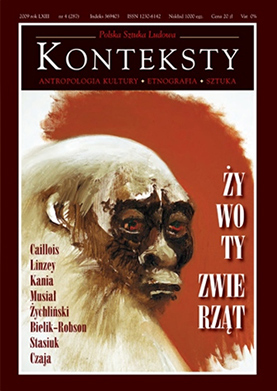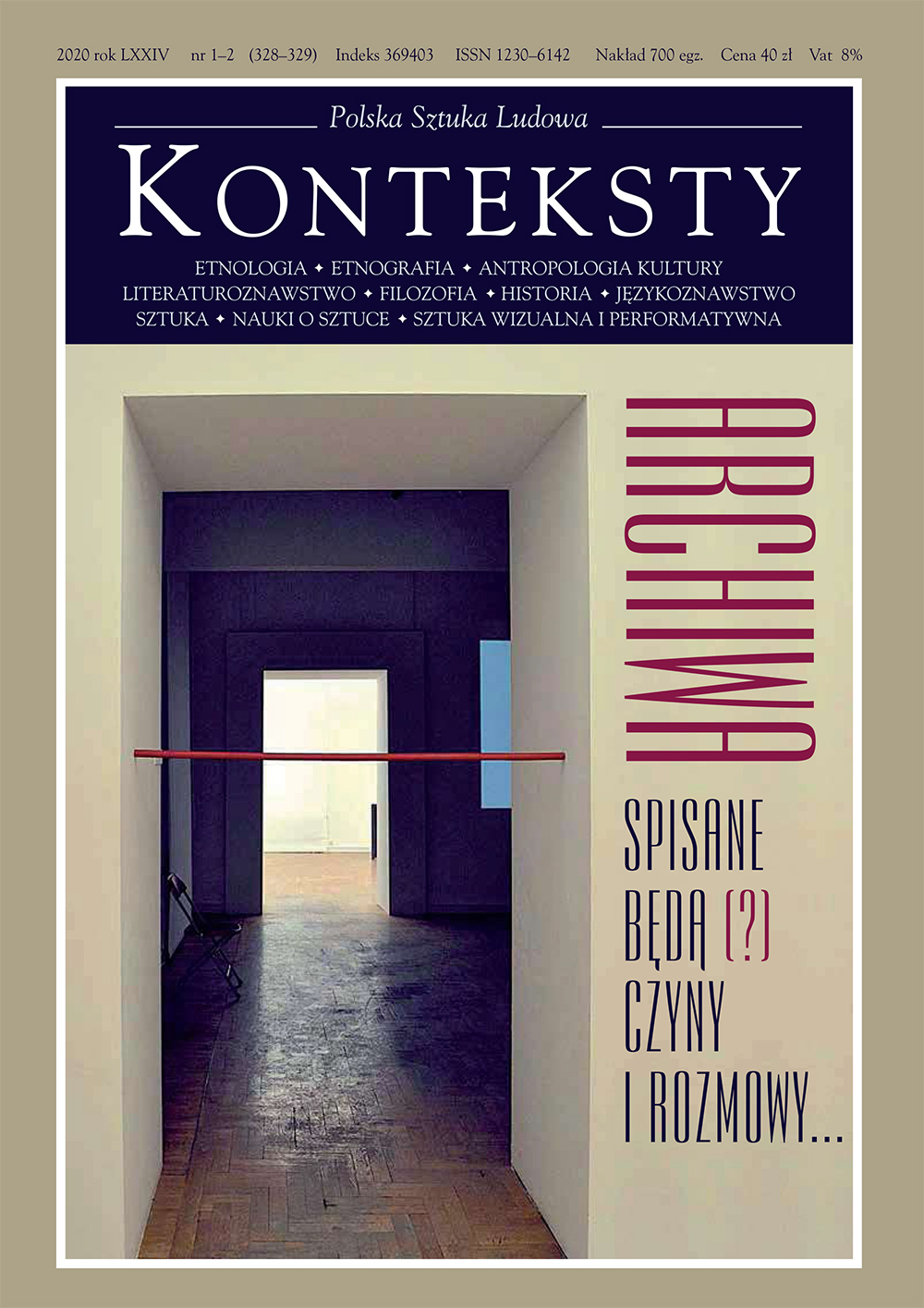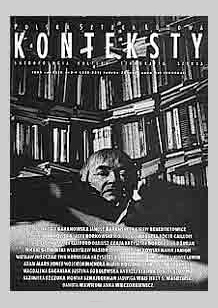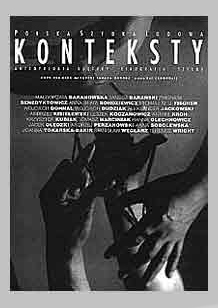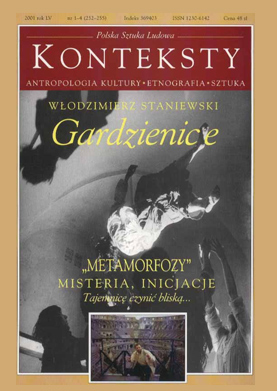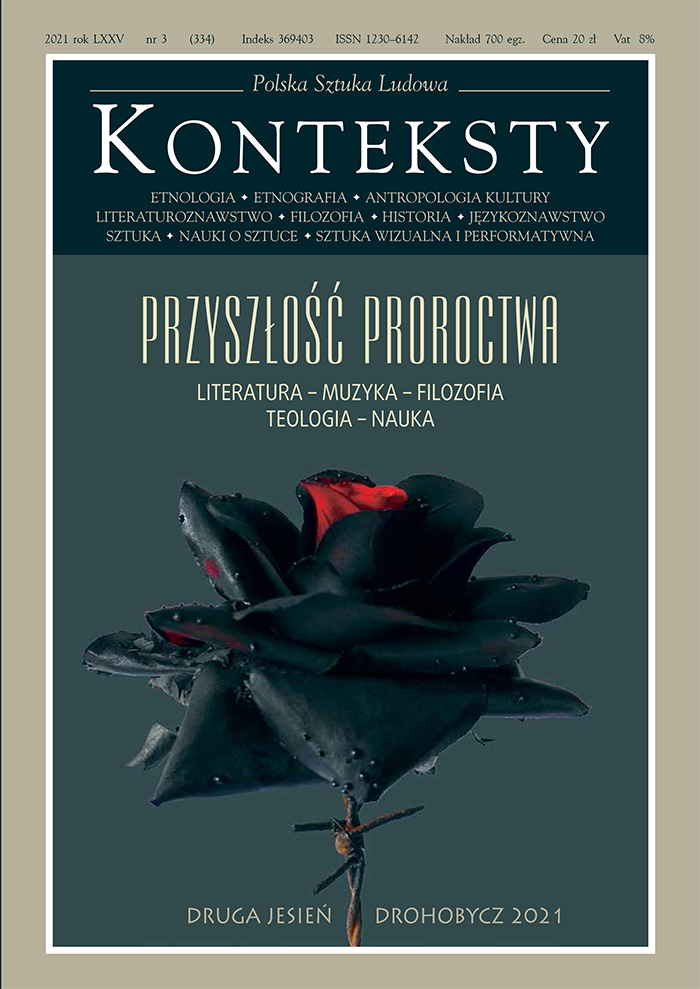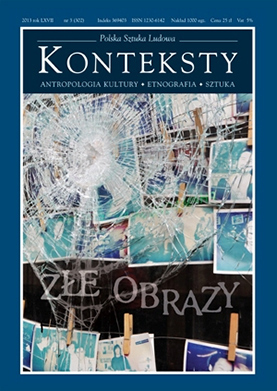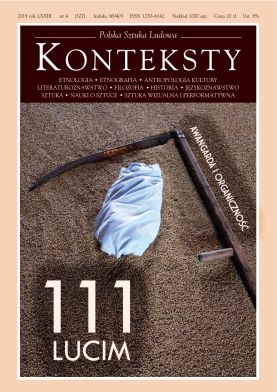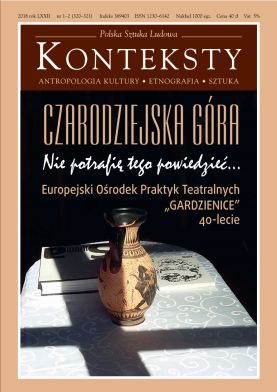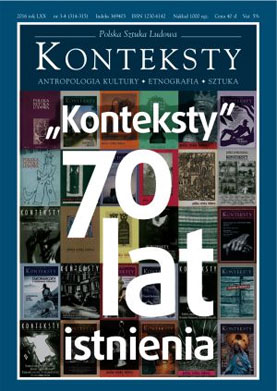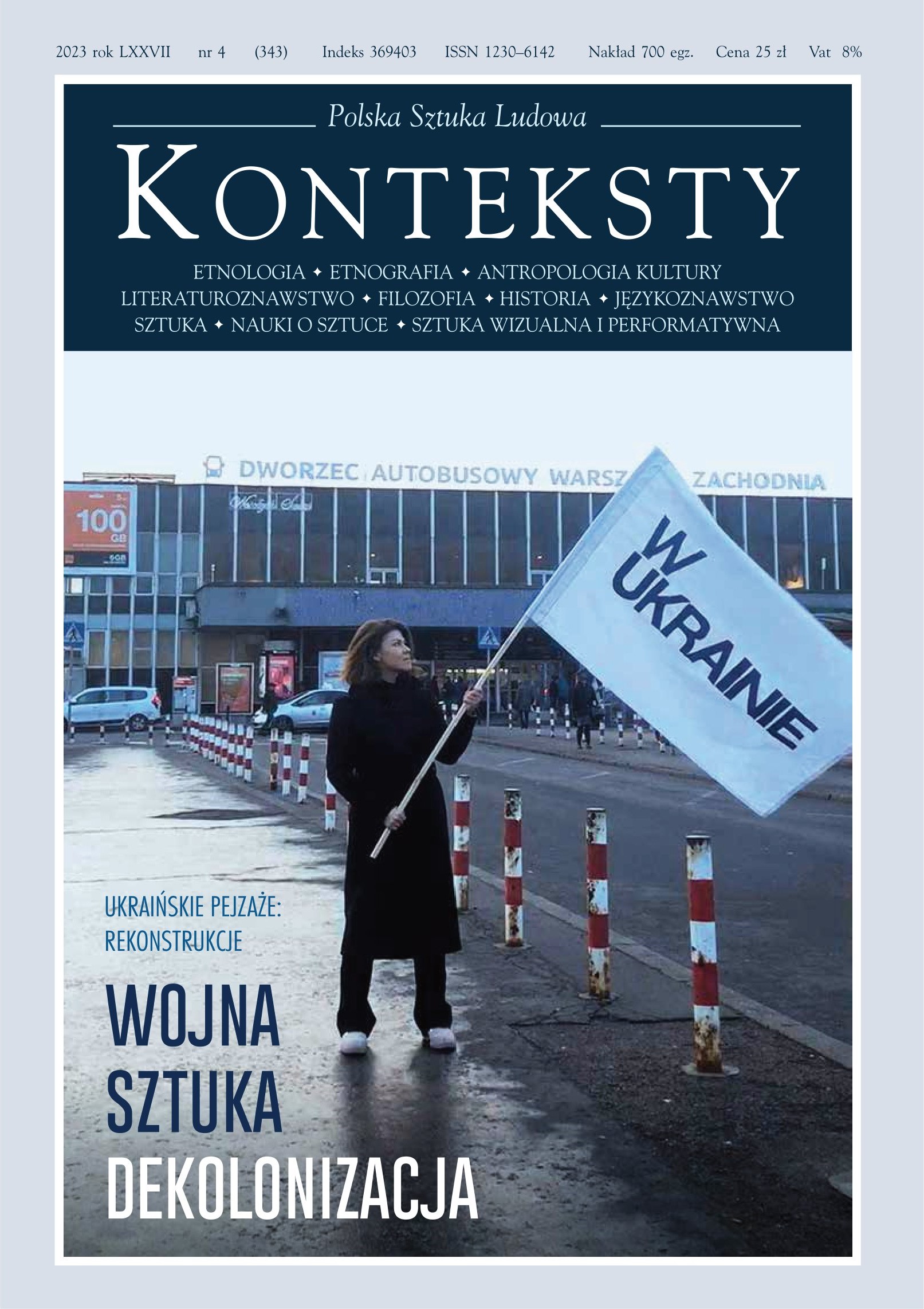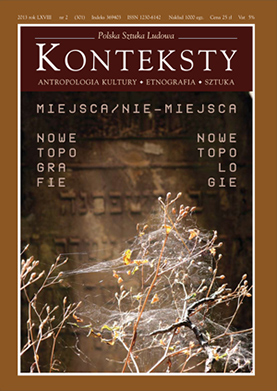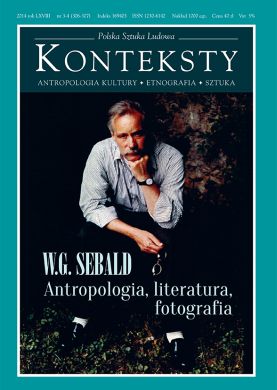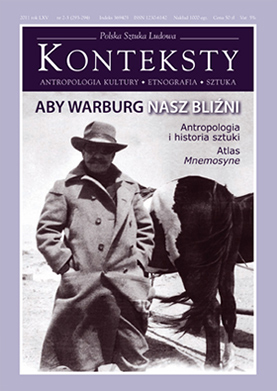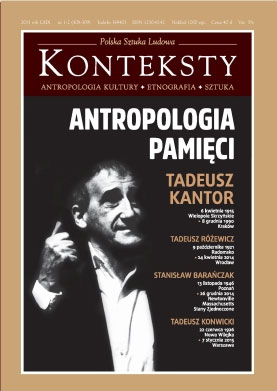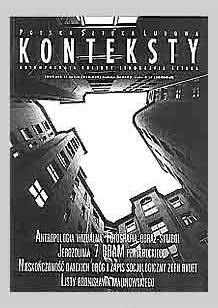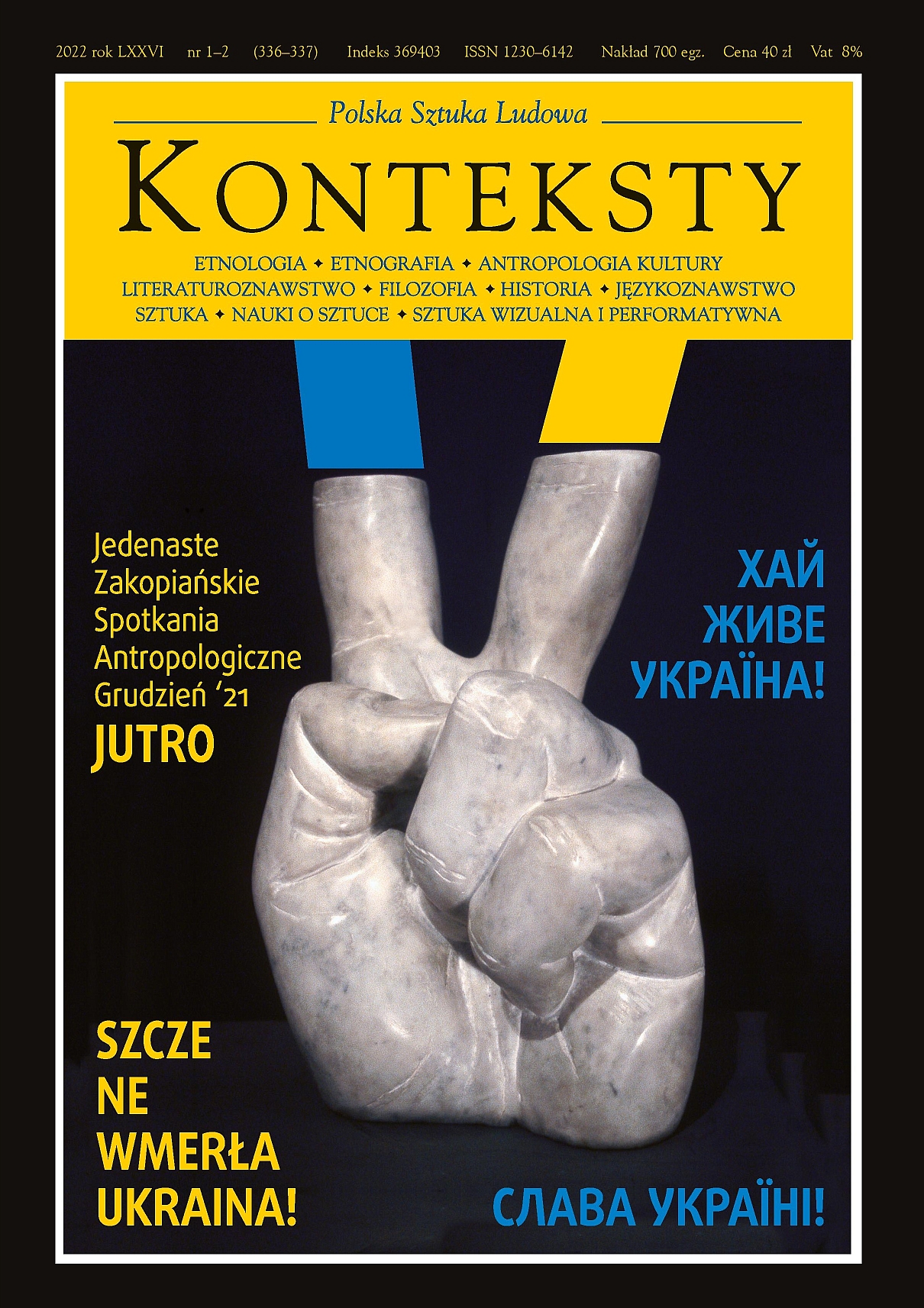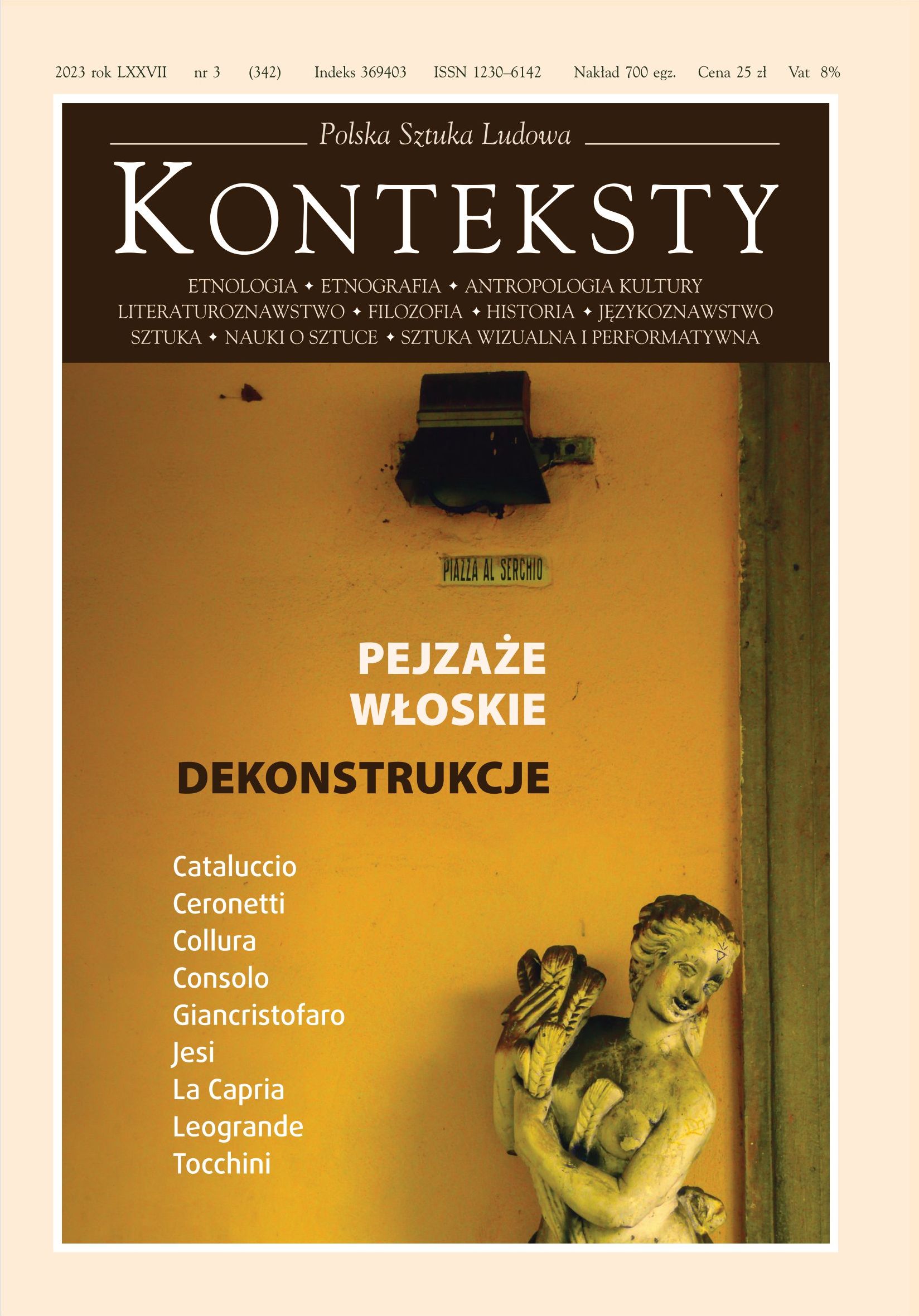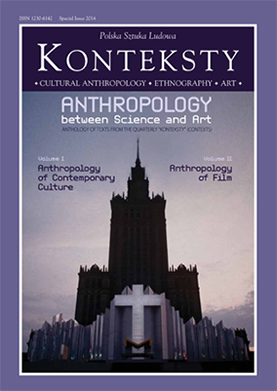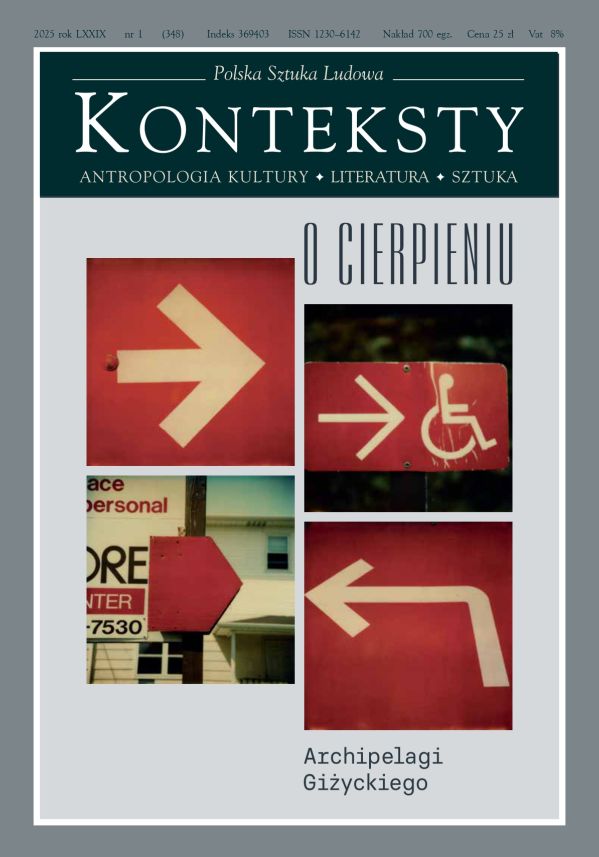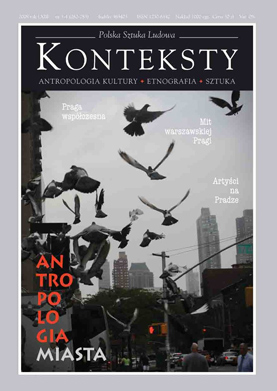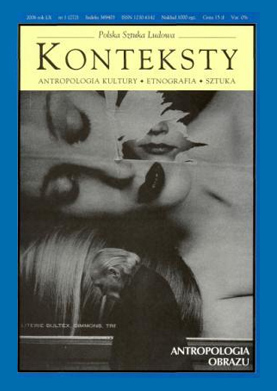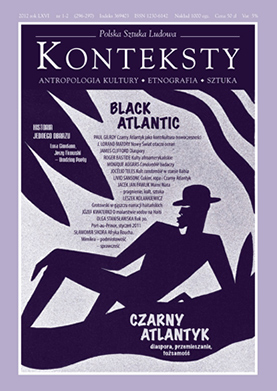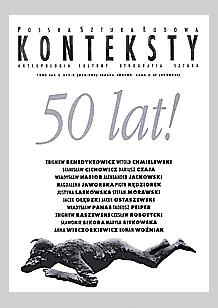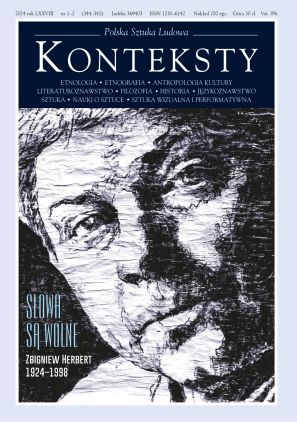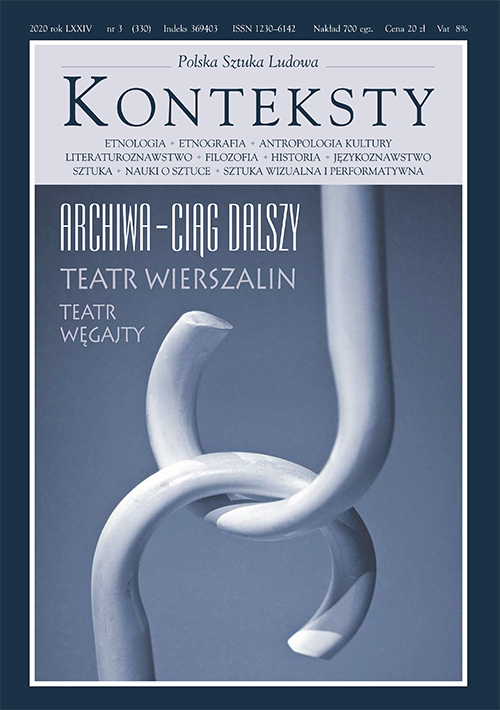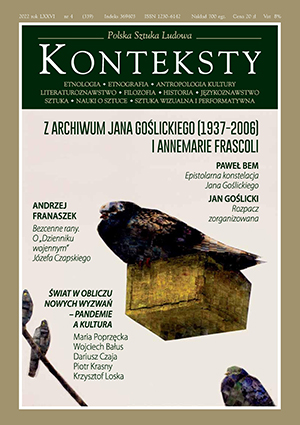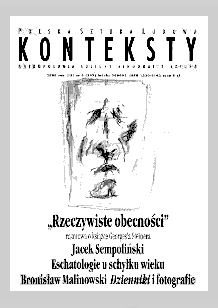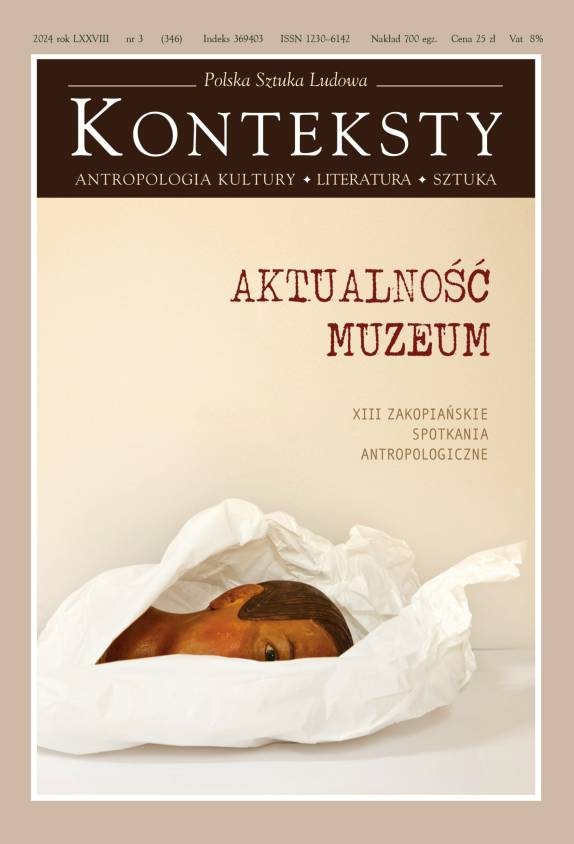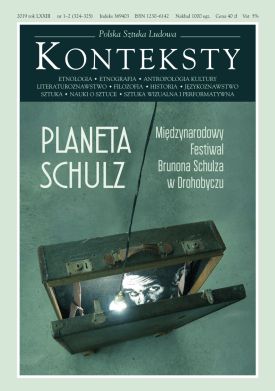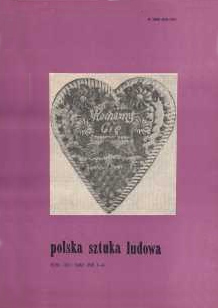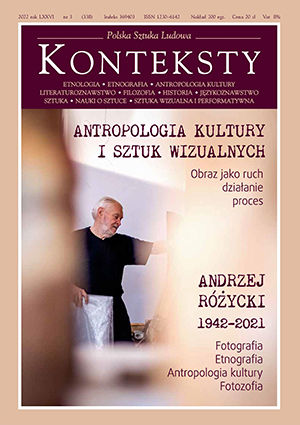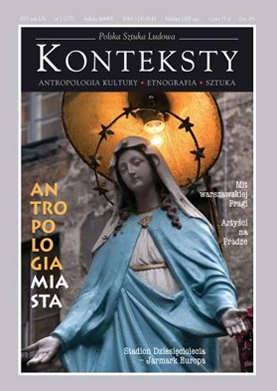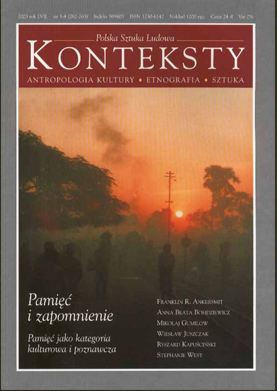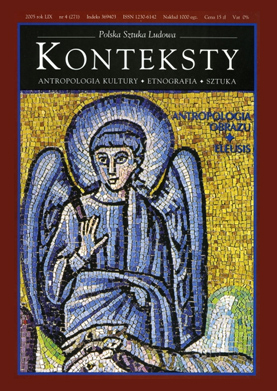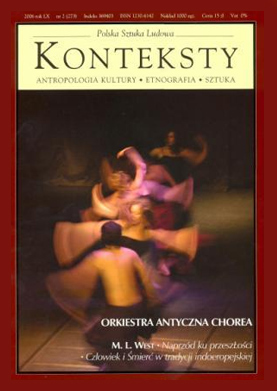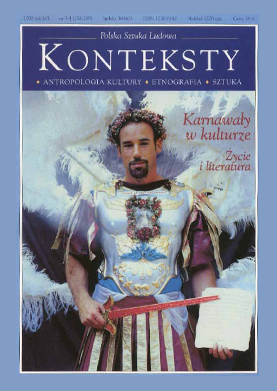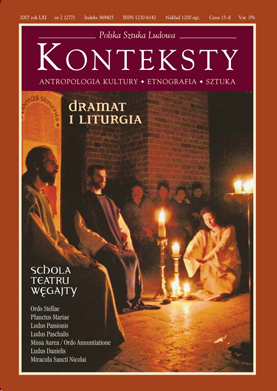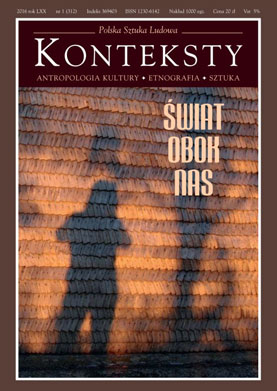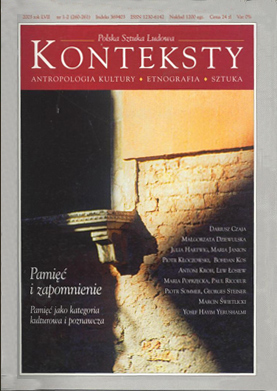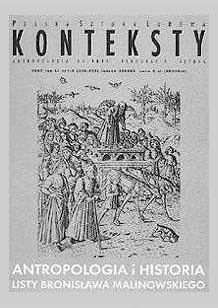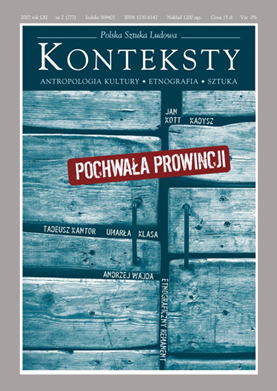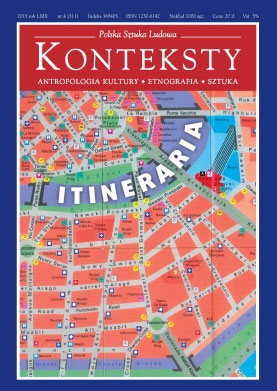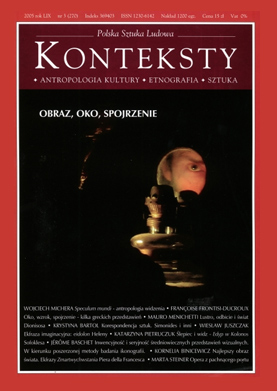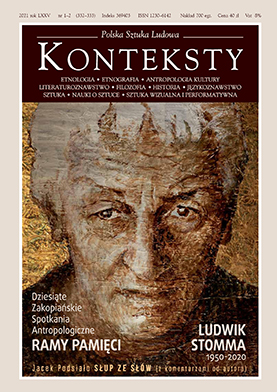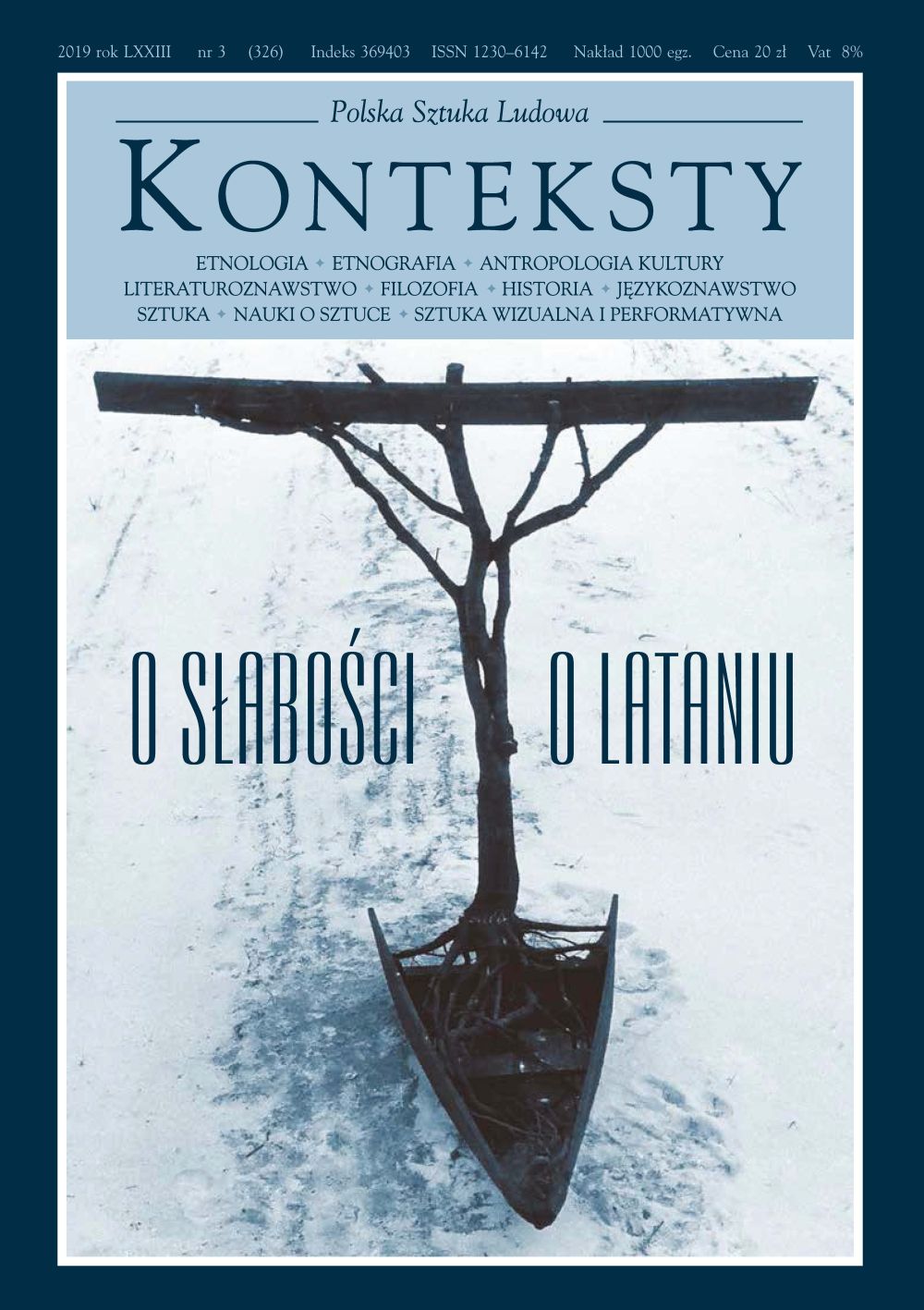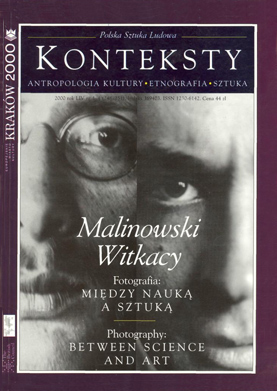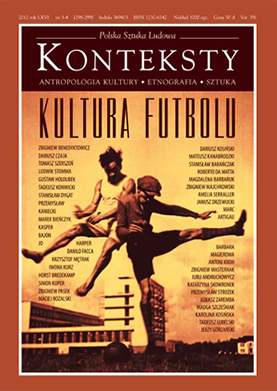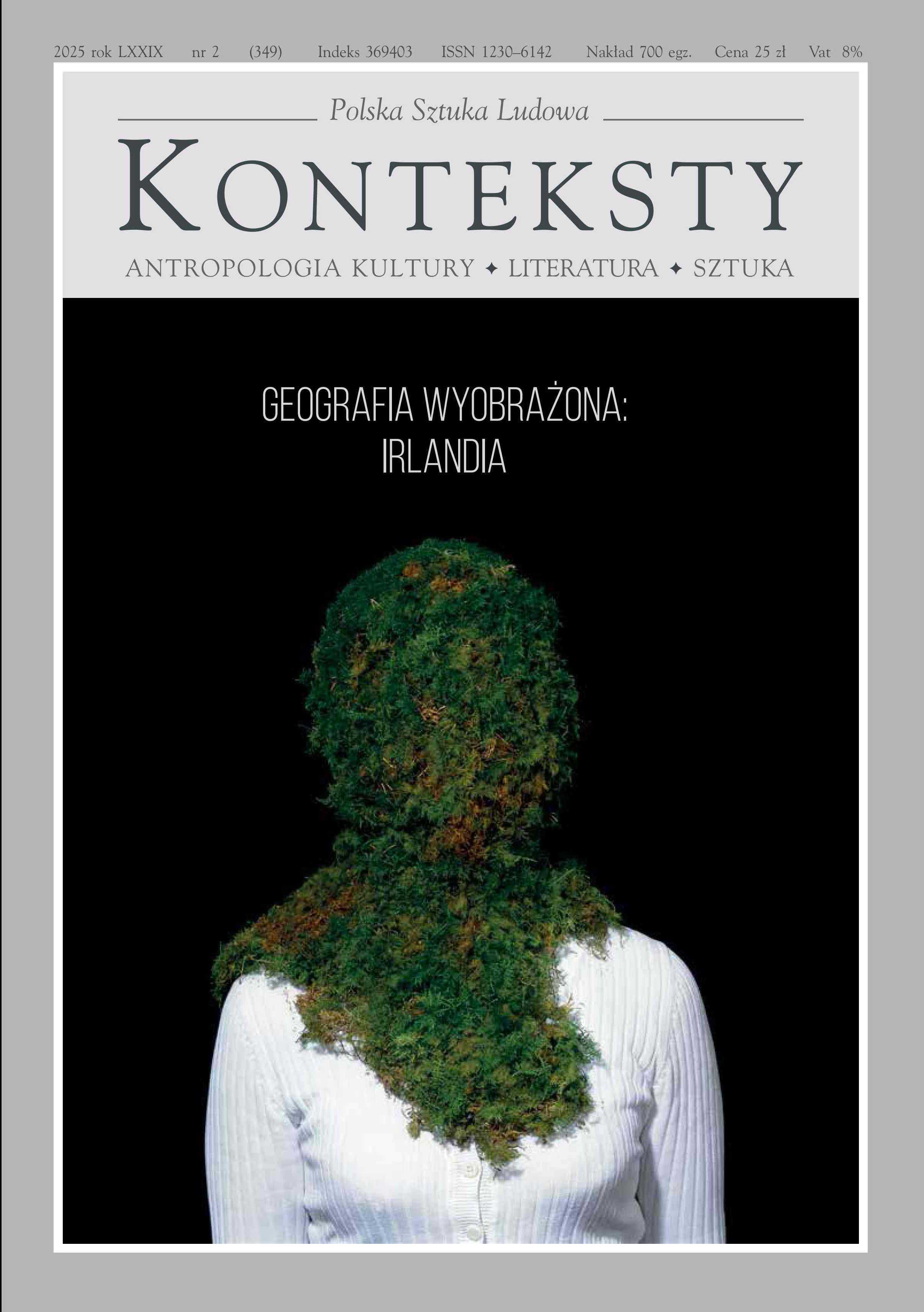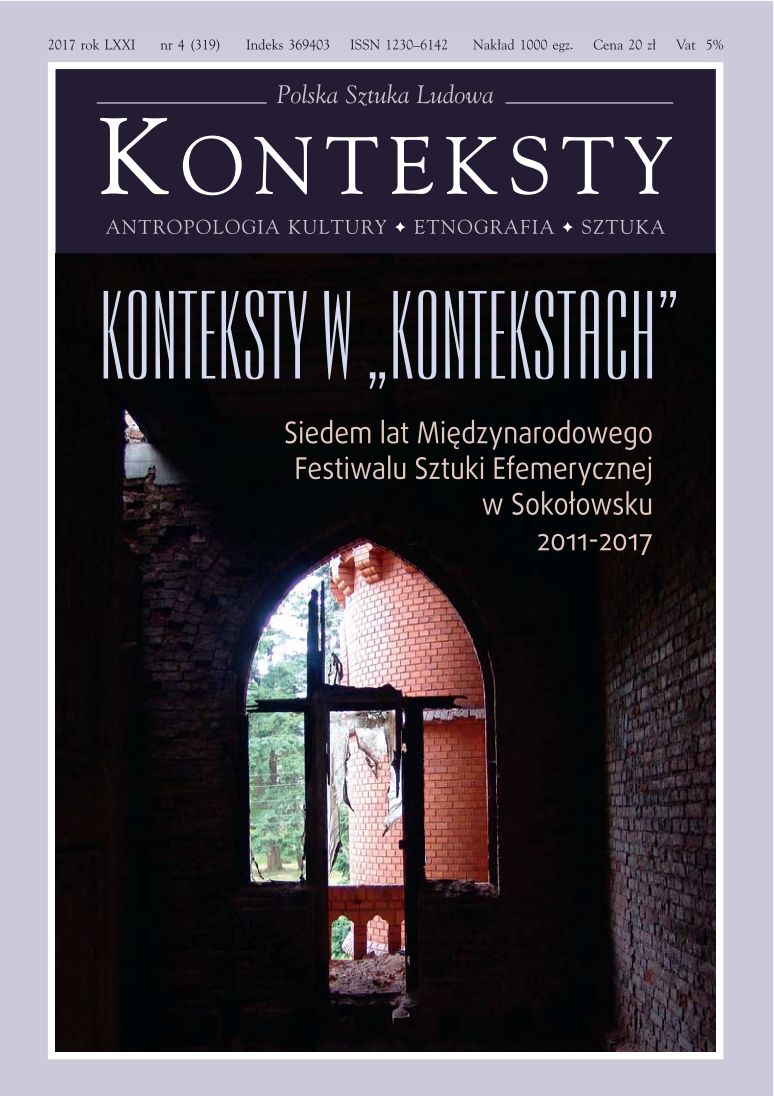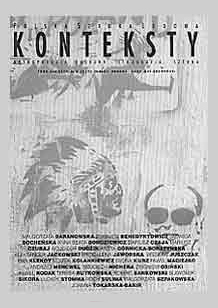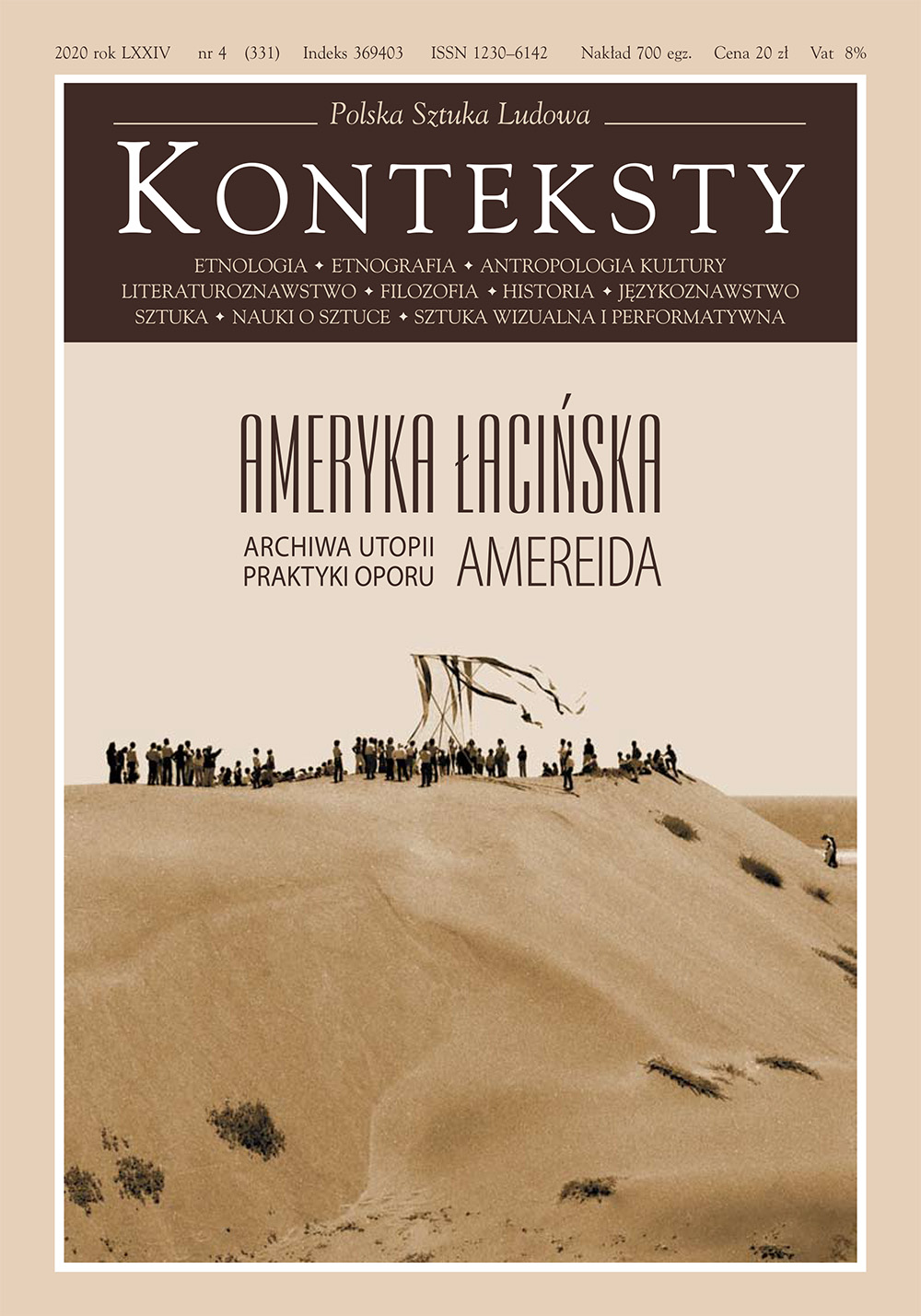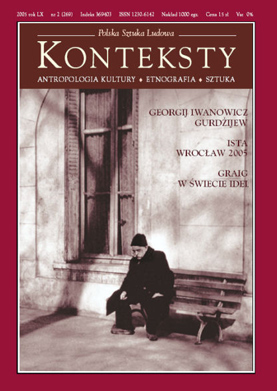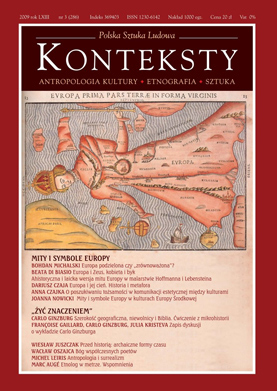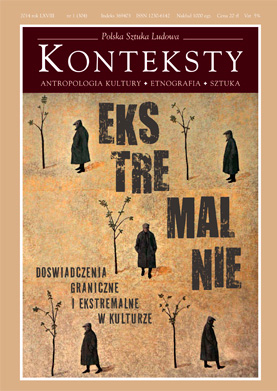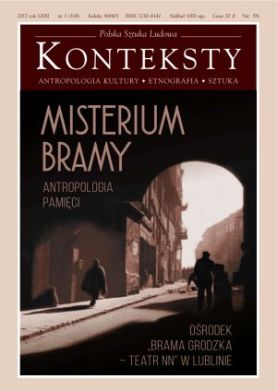Issue 2007/3-4 (278-279) - Michel Leiris
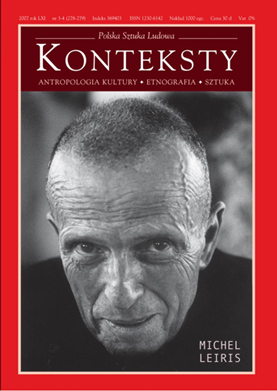
| Dariusz Czaja | Leiris. Outline | 3 |
| Tomasz Szerszeń | Michel Leiris User’s Guide  | 7 |
A user’s guide, mode d’emploi, or perhaps mode d’inemploi? At any rate, this is the first Polish extensive guide to the works of Michel Leiris. | ||
| *** | ||
| * | 23 | |
| Michel Leiris | My Name is Michel Leiris, I Have Just Turned Thirty Four  | 26 |
Opening fragment of L’Age d’homme. | ||
| Michel Leiris | „...Reusement!”  | 28 |
The first chapter of the first part (Biffures) of La Règle de jeu, the extensive autobiography by Michel Leiris on stages in the emergence and development of individual consciousness. The presented chapter recalls the moment of the discovery of speech and the sources of repression which the author regards as one of the prime motor forces of the consolidation of the personality. Next to Andriey Bieliy’s equally autobiographic novel Kotik Letayev (1917), Leiris’ book is the most advanced attempt at penetrating the memory of early childhood by applying the means of artistic prose. | ||
| Michel Leiris | Le Sacré dans la vie quotidienne  | 29 |
The text of a lecture which Michel Leiris gave at Collège de Sociologie in Paris – an attempted analysis of his own childhood inspired by Freud’s The Psychopathology of Everyday Life. „What is my meaning of sacrum?” asked Leiris. He discovered the sacrum in language lapses, in certain objects, which he assigned special significance, and in a particular valorisation of the space of the family home... Sacrum in Daily Life tries to build a bridge between ethnography and autobiography, a specific, highly personal „anthropology of daily life”... | ||
| Michel Leiris | 34 | |
| Małgorzata Baranowska | 35 | |
| Michel Leiris | Journal 1922-1989 fragments  | 36 |
Fragments of a monumental journal – a collection of daily records and initial notes for planned texts – published already after the author’s death. The selection encompasses almost seventy years: from inspiration by Surrealism and hermetic occultism to old age. The journal is predominantly evidence of the writer’s wide-ranging interests and unusual acquaintanceships. | ||
| James Clifford | The Tropological Realism of Michel Leiris  | 48 |
This introduction to a special edition of „Sulfur” (1986), devoted to Leiris, deals with his life, artistic and intellectual friendships, travels, work methods, autobiographical writings and ethnographic studies. Leiris was one of the most self-centred men of letters who, however, incessantly confronted that which was to be found outside his own person – existence in the social processes of the language and writing. | ||
| Denis Hollier | The Holofernes Headline Notes about Judith  | 56 |
An analysis of the role played in Michel Leiris’ L’Age d’homme by the Biblical legend of Judith. The decapitation of Holofernes is a „prime scene of the autobiographical genre: an autobiography produces the same effect as the act performed by Judith – its separates the head from the body and renders the person who embarks upon the task of self-presentation distant from himself”. An identification of Leiris with Holofernes produces an autobiographical project, conceived as an experience of that which cannot be grasped by the grammatical first person – it makes it possible for Leiris to vanish from his autobiography. | ||
| Dariusz Czaja | Judith’s Cut: The Excesses of Exegesis  | 66 |
The Biblical Judith occupied a significant place in the private mythology of Michel Leiris, peopled by numerous female figures. Her portrait, outlined in the autobiographical L’Age d’homme, differs considerably from the characteristic in the Old Testament Book of Judith. The author closely follows the changes and transition of meaning to which Judith had been subjected in comparison to her Biblical original. Furthermore, he reveals the peculiar exegesis conducted by Leiris, indicating that despite the fact that its deciphering cannot be defended upon the basis of an exegesis subjected to methodological rigours, it still possesses an indispensable existential value; reading it is treated in the categories of „creative treason”. | ||
| Philippe Lejeune | Reading Leiris. Autobiography and Language  | 75 |
An outstanding expert on autobiographies meticulously analysed L’Age d’homme by Michel Leiris, reading it sentence-by-sentence and word-by-word... | ||
| *** | ||
| Michel Leiris | L’Afrique fantôme  | 92 |
Fragments of a 650-pages long journal from an ethnographic expedition from Dakar to Djibouti (1931- 1933), in which Leiris took part as „secretary-archivist”. In his controversial work (which scientific milieus found particularly upsetting) Leiris combined notes from on–the-spot research, his own dreams and erotic obsessions, and descriptions of dull daily activity, with a critical assessment of colonialism and ethnography as a science. L’Afrique is also a story about depression, love, obsession and the grand illusion, which the author identified with Africa and exotic journeys in general. Next to the Bronisław Malinowski diaries, L’Afrique fantôme is an important document showing not only the behind the scenes aspects of the work conducted by an ethnographer (which Clifford Geertz stressed upon numerous occasions), but also a dramatic disintegration of the „I“ – here taken to its extremes – which is a characteristic feature of modernity. | ||
| Tomasz Szerszeń | From Dakar to Djibouti, from Afrique to fantôme...  | 105 |
„Africa is a word, a mere pretext...” – Philippe Soupault wrote about L’Afrique fantôme. In this case, it would be difficult to agree with the opinion of the author of Les Dernières Nuits de Paris, since the title of Leiris‘ African journal absorbs all the themes and interpretations: Africa , Michel, Emawayish, colonialism, depression, obsession, the netherworld... | ||
| *** | ||
| * | 107 | |
| Michel Leiris | Voyageur et son ombre  | 108 |
This Nietzschean title conceals a historical presentation of Raymond Roussel, which Michel Leiris, his earliest supporter in the next generation, presented in 1935, two years after the protagonist’s death. The sketch played a prominent role in propagating the works of Roussel in a perspective delineated by Surrealism. | ||
| Raymond Roussel | African Fauna  | 110 |
A translation and summary (made by Jan Gondowicz) of a fragment from Impressions d’Afrique by Raymond Roussel. | ||
| Olga Stanisławska | At the Crossroads of Views. Poland-Europe-Africa  | 111 |
In an introduction to a discussion about Joseph Conrad and colonialism, the author proposed a synthetic description of Polish encounters with Africa : from Beniowski. Szolc-Rogoziński, Sienkiewicz, Conrad, Czekanowski and Malinowski to Kapuściński. She also recalled Poles taking photographs of Africa : starting with Jan Czekanowski, Kazimierz Zagórski and Witold Grzesiewicz, to Ryszard Kapuściński and Chris Ledóchowski. „The history of Poland compels her to oscillate between methods deployed by the colonialists and those of the colonised. This past is the reason why Polish encounters with exotic cultures were rarely devoid of intermediaries. The third link, a combination of a matchmaker and a duenna, were usually West European institutions. Conrad and Malinowski arrived from the peripheries and, as writers, were condemned to cosmopolitan European identity and a Polish cultural distance; they examined the world from positions which enabled them to apply encounters with the Other for creating new paradigms of ethnographic subjectivity and self-creation”. | ||
| Jean Omasombo-Tschonda, Silvère Monod, Elikia M’Bokolo, Pierre Halen, Catherine Coquery–Vidrovitch, Georges Balandier | Joseph Conrad and the « Darkness » of Central Africa – a Record of a Discussion  | 113 |
The titular discussion was held in 2004 at Maison des Sciences de l’Homme in Paris as part of an international conference on „The Construction of Perception: Poland – Europe – Africa ”. Its topic was Joseph Conrad and his vision of Africa (i. a. the question of colonialism), contained primarily in The Outpost of Progress and Heart of Darkness. | ||
| Jan Gondowicz | The Flavour of Man  | 121 |
Joseph Conrad resorted to disguising drastic themes (such as eroticism), which include anthropophagy, described at least upon five occasions. Examined from this viewpoint, Heart of Darkness discloses not only connections with the ethnological conceptions proposed by J. G. Frazer, but also an allegorical key to the plot, originating from Livy, whose writings the young Conrad read while studying for his final secondary school examination in Cracow. | ||
| Sławomir Sikora | Nostalgia Realised  | 124 |
Kazimierz Zagórski (1883-1944), a Polish officer and engineer, arrived in Africa in the mid-1920s, and opened up a photographic studio in Léopoldville. Apart from taking standard photographs he also initiated a project which he described as L’Afrique qui disparaît and which involved taking photographs in the course of specially arranged journeys, always in the so-called natural environment. The photographs depict native inhabitants of a given territory, „unsullied” by Western civilisation. Strong emphasis is placed on portraits, executed with great attention, a feeling for form and exceptional care for lighting. The sitters were almost always carefully posed and, as a rule, are distant from stereotypes. The photographs certainly focused on a person and not a certain larger entity, which anthropologists were in the habit of calling culture. Both those portraits which showed only the face and those of a larger fragment of a person display features of individualisation (arrangement, lighting) although Zagórski frequently appeared to attach just as much attention to the sitter’s face as to the hairdo, scars or other ornaments (which, it must be stressed, were their owners’ pride). Naturally, the Zagórski photographs are not devoid of certain ideological operations (aestheticisation, hieratisation, operations associated with temporality, sometimes a sui generis objectivisation). The decontextualisation which he sometimes allowed himself in portraits treating particular parts of the body as equal brings the applied operations close to certain phenomena discernible in contemporary photography (e. g. R. Mapplethorpe or I. Penn). The text originally accompanied an exhibition of photographs by Kazimierz Zagórski (National Art Gallery Zachęta 2005, with the author as co-curator); now, it has been expanded by means of an appendix containing an extremely interesting album by Edward Piterek, a Polish airman in Africa (mid-1940s), based entirely on photographs-postcards by Zagórski, subjected to special processing and classification | ||
| Michel Leiris | Théâtre joué et théâtre vécu dans le culte de Zâr  | 130 |
„Demonic possession is a theatre in itself, since objectively it refers to a depiction of a mythical or legendary figure by man-the actor”, Leiris wrote when during his Dakar-Djibuti mission he studied the Ethopian zâr cult. In time, he started to attach great importance to its „spectacle aspects” which, following in the footsteps of Alfred Métraux, he described as „ritual comedy”. The author drew attention to assorted degrees of the authenticity of „possessions”: from a so-called enacted theatre which is a purely functional element whose purpose is to release social tension, to the „experienced theatre” (authentic possession). He also stressed the line between the two states, so thin that for all practical purposes it cannot be designated. In his reflections about the character of possession Leiris came close to the conception of the actor as it is presented by Sartre in L'Être et le néant. | ||
| *** | ||
| Michel Leiris | Francis Bacon face et profil  | 139 |
In this classical essay Leiris interpreted the oeuvre of his friend, the acclaimed painter Francis Bacon. In doing so, he developed the conception of „live presence” displayed in the Bacon canvases, which is the reason why they „resemble life” and their realism shocks. The latter feature has little in common with naturalism and should be compared rather to Joyce’s epiphany. Looking at these paintings we are, Leiris wrote, „trapped by a sui generis liturgy in blanco, without any reference to transcendence, existing only for its own sake, and more poignant since it is uncontaminated by any sort of meaning”. | ||
| Michel Leiris, Francis Bacon | About Oneself / To Each Other  | 151 |
An acclaimed painter and a renowned anthropologist, Francis Bacon and Michel Leiris, remained friends from the mid-1960s until death. This was an unusually intensive „relationship” – let us recall that Bacon twice portrayed the author of L’Age d’homme and created a series inspired by Leiris’ Le Miroir de la Tauromachie ; in turn, Leiris is the author of several important essays about Bacon’s painting and contributed to the propagation of his oeuvre in France . We publish only a few of the numerous extant traces: three letters and two brief statements... | ||
| Dariusz Czaja | Francis Bacon: Traces of a Catastrophe  | 153 |
Not surprisingly, paintings by Francis Bacon were usually commented by resorting to an instrumentarium derived from a dictionary of the history of art. The author proposed a different perception and tried to view Bacon’s works thorough the prism of concepts not from the realm of aesthetics but theology. By referring to numerous statements made by assorted commentators he traced the obstinately recurring motif of evil. This is a proposal to treat Bacon’s oeuvre as a painterly introduction of the presence of evil and as sui generis „theological treatises” stressing the motif of irremovable evil in human existence, a strong presence of the infernal element in the world. | ||
| Michel Leiris | Alberto Giacometti  | 163 |
This short text, published in 1929 in „Documents”, was the first, highly personal attempt at describing the phenomenon of sculptures by Alberto Giacometti. „We find the overwhelming majority of works of art terribly boring”, Leiris wrote. He went on to say: „There are certain moments which one might describe as a crisis and only they are important in life. These are the moments when suddenly that what is external begins to correspond to the demands transmitted from our interior, moments in which the outside world opens up so that the threads of understanding could be just as suddenly established between it and our hearts. (...) I am fond of Giacometti’s sculpture because everything which he does appears to render such a crisis indelible in stone...” | ||
| Marek Kędzierski | Giacometti before Giacometti  | 165 |
The first years spent by Alberto Giacometti in Paris: the cooperation with the periodical „Documents”, the beginning of a friendship with Michel Leiris, the decision to join the Surrealists, the difficult relationship with André Breton, the fascination with primitive and non-European art, the search for a suitable form of artistic expression, the death of his father, the rejection of Surrealism... | ||
| *** | ||
| Michel Leiris | Le Miroir de la Tauromachie Selected Fragments  | 172 |
Several key fragments of Leiris’ famous essay about tauromachy, published in Polish in Gdańsk in 1999. | ||
| Michel Leiris | Rafaelillo, 9 octobre, Nîmes  | 174 |
An impression about Rafaelillo – a toreador from Valencia whom Leiris considered a symbol of the classical simplicity of style; he described the fights in which Rafaelillo took part as „little epiphany”. The text outlines a parallel pertaining to a similarity between the image of a toreador in an arena and a circus tightrope walker as conceived by Picasso. Both balance on a thin line separating life from death. | ||
| Ludwik Stomma | Anthropologist and the Corrida  | 175 |
In an ethnological interpretation of the corrida the author considered successive parts of the spectacle (with a detailed examination of its components), conceived as stages in a ritual in which the bull is first humiliated and then ennobled – as in the knighting ceremony. In this way, the bull becomes a worthy opponent of the matador, with whom it engages in a duel. | ||
| José Ortega Y Gasset | Sketch of an Epilogue for Domingo Ortega  | 178 |
Remarks on the „geometry” of the corrida, the Navarran and Andalusian species of the bull, and corresponding choreographic norms, determining the style of the fight and the gesticulation characteristic for the Basques and the Andalusians. | ||
| Jean Clair | From the Corrida to the Crucifixion  | 182 |
Fragment of an introduction to the album Picasso. Sous les soleil de Mithra on the presence in Picasso’s oeuvre of certain cultural motifs concentrated primarily on the bloody sacrificial act, the bullfight (ancient and contemporary), the lethal gaze, the symbolic identity of the eye and the testicles, fairground acrobatics, the ladder to heaven and the Crucifixion. | ||
| José Bergamin | The Silent Music of the Corrida  | 187 |
The spectacle of tauromachy possesses its own silent music intended for the eyes. The mystery of the bullfight reaches the ears via the eyes and vice versa, and then it dies in ecstasy, immortalised in a fleeting albeit indestructible form … | ||
| Georges Didi-Huberman | Dancer of Loneliness  | 189 |
Why do Le Miroir de la tauromachie and the writings of José Bergamin about the corrida contain an essential reference to Christian mystics, St. John of the Cross or Nicholas of Kusa? What actually is the essence of Bergman’s „silent music”? What sort of a connection is there between tauromachy, the dance, „Andalusian illiteracy” and theology? | ||
| Manuel Delgado Ruiz | The Leiris Tauromachy as Embodied by Us  | 193 |
A commentary to the taurological works by Leiris, the art of tauromachy and the eroticism patterned on it, which resigns from the fulfilment of the orgasm for the sake of a „feminine” model – aesthetisation, theatralisation, delay. The character which Michel Leiris ascribed to the corrida is the same which the theoreticians of postmodernism refer to social relations dominating in present-day culture. The most important moment in life and in the arena is the one when the toreador and the beast, I and the Other, pass without touching each other. | ||
| Magdalena Barbaruk | Toreros Die Young. The Corrida in Films by Pedro Almodóvar  | 198 |
Pedro Almodóvar did not want to make movies about the corrida and recreate the bullfight: in two breakthrough works, Matador (1986) and Talk to Her (2002), he transferred the psychology of the bull-man relation to that of man-man. The author of the article proposed a detailed analysis of both films with the assistance of the corrida envisaged as a key, and presented extensive source material (i. a. about the famous toreador Manolete). | ||
| * | 210 | |
| *** | ||
| Jan Gondowicz | Leiris within the Range of the Alchemy of the Word  | 211 |
All the literary and ethnological works by Michel Leiris are an autobiographical experiment. Similarly to other representatives of the Surrealistic stand Leiris made creative use of the mechanics of the play on words, elevated above comic functions according to the Freudian thesis about the connection between a joke and the subconscious. In his version, however, this meant that for years he was engaged in creating his own lexicon of associations, an instrument of self-analysis, and a pursuit of the collective mythology concealed in the recesses of the language, and studies on the limits of speech as evidence of the submission or resistance of thought towards its rules. | ||
| Michel Leiris | Sésame  | 214 |
In this fragment of an essay Musique en texte, musique antitexte, which accompanied Langage tangage, Leiris indiciated the sources of his fascination with the language, found not only in numerous „hermetic” texts but also in the experience of studying sigi so, the secret language of the Dogon people, during his expedition to Africa. Emphasis was also placed on the role played by Essai de sémantique by Michel Bréal from 1897, „where the perception of the tendency of the Indo-European languages to express everything in the form of activity assures that even the grammatical turn ‘clou prend un s au pluriel’ is the onset of a myth...” | ||
| Michel Leiris | Conception et réalité chez Raymond Roussel  | 216 |
Leiris portrayed Raymond Roussel, living alone among three cooks, three gardeners, three drivers and three Rolls Royce cars, upon the basis of his own recollections and a study by the psychiatrist Pierre Janet, whose patients included the writer. This is a canonical likeness of Roussel as a man and an artist, founded on a psychoanalytical parallel of his unusual creative method and his paranoid personality, overwhelmed by anxieties and fears. | ||
| Dariusz Czaja | Dakar  | 223 |
The titular „ Dakar ” is not understood as a sign referring to the capital of Senegal but is treated predominantly as a word, a linguistic reality. In his demonstratively subjective text the author, inspired by some of Michel Leiris‘ ideas, reveals his own associations and the sound aura surrounding this word. | ||
| *** | ||
| Andrzej Sosnowski | Notes on How to Perform Opera Michel Leiris Turandot  | 226 |
The notes about Puccini’s opera come from Operratiques. In the exotic setting of Turandot Leiris discovered motifs similar to those which captivated him in L’Age d’homme. An identification of Calaf and Holofernes, as well as Judith and Turandot reverted him towards autobiographical themes: he planned writing a book on Turandot or the Triumph of Holofernes... | ||
| Michel Leiris | 227 | |
| Jean Jamin | Reticence: Leiris, Lévi-Strauss and the Opera  | 229 |
Two outstanding French ethnologists – Michel Leiris and Claude Lévi-Strauss – were also great opera lovers and experts. Both not only wrote about it but also introduced operatic and musical motifs into their works (the former attached importance to Puccini, Verdi and Leoncavallo, and the latter, naturally, to Wagner). Their approach, however, differed totally, as evidenced specially by a text—replica which Lévi-Strauss wrote after the posthumous publication of Leiris’ Operratiques – a collection of extracts and fragments about the opera. The author of Structural Anthropology remained sensitive to purely musical questions: the essential role of the score, while Leiris focused on the libretto (Louis–René des Forêts recalled: „The striking feature of our conversations, which I confirmed while reading a collection of his posthumous notes entitled Operratiques, was the fact that he was interested less in music as such, and more in the spectacle and, primarily, in the contents of the libretto. Here he was unbeatable, capable of recounting in detail the plot of every opera, even if it was immensely convoluted and improbable, as is frequently the case with Verdi”) and, first and foremost, on the spectacle itself. This fundamental controversy about the character of the opera was presented by Jean Jamin, another ethnologist and a friend of Michel Leiris. | ||
| Tomasz Cyz | Turandot or Liù after Pucccini  | 236 |
The text of Turandot or Liù is a painstaking attempt at deciphering the opera by Giacomo Puccini. The author interpreted this work within the perspective of the composer’s oeuvre (Turandot is his last, unfinished opera – Puccini, who suffered from cancer of the larynx, died while writing it), his life (Liù, the second most important female protagonist, is an homage paid by the composer to his servant, Doria, who committed suicide after his wife accused her of having an affair with him), the period (the end of the first world war, the birth of Italian fascism), music in general (the emergence of the twentieth-century avantgarde), other works about the Chinese princess (Gozzi, Reinhardt, Busoni, Koch, von Einem, Vakhtangov), the spectacle by David Pountney and Valeriy Gergiev (Salzburg, 2002), the two endings of the opera (by Franco Alfano from 1926 and by Luciano Berio), and the reflections of Slavoj Žižek. „Žižek wrote that although Liù’s suicide cannot be eradicated, it must remain ’deprived of an effect’, if Calaf and Turandot are to live as if nothing happened. As if nothing happened... Is that possible? And was it possible for Puccini who never completed his own work?”... | ||
| *** | ||
| Tomasz Szerszeń | „Documents” 1929-1930  | 240 |
„Documents”, founded in 1929 by Georges Wildenstein, was an unusual and perhaps one of the most interesting episodes in the history of the inter-war European avantgarde. The motor forces of the periodical were three extraordinary men: Carl Einstein, Georges Bataille and Michel Leiris. Their project – a combination of science and art, of that which is part of the past and the avantgarde, of the European and the non-European – remained an isolated Nietzschean attempt at „re-evaluating all”. „Documents” was also, and this is slightly less obvious, an uncommon atlas of images. This emphasis on visual experience brought the project conceived by Bataille and Einstein close to the conceptions launched by Aby Warburg. If the Mnemosyne atlas is a sui generis „anthropology of the memory of forms” then „Documents” can be recognised as an „anthropology of that which is formless”… | ||
| Denis Hollier | The Question of Lay Ethnography The Enthropological Wild Card  | 250 |
Who was Carl Einstein? What was the role played by the exotic in the conception launched by the editors of „Documents”? For what purposes did they need ethnography? In „Documents” ethnography was identified with the supreme form of that which Bataille soon described as heterology. Ethnography appeared to be the saviour of the heterogeneous at the same time when it became obvious that the historical fate of differences is their obliteration. (In Tristes Tropiques Claude Lévi-Strauss coined the famous neologism of „enthropology” in order to suggest that the founding motif of anthropology was the prompt disappearance of its object. In turn, fascination inspired by exotic otherness was enrooted not in pleasure stemming from otherness as such as from anxiety about it or, to cite Roland Barthes, not so much from an ethnographic interest in the positive aspect of studium as from sensitivity to that which in Camera lucida he described as a wound, punctum... | ||
| Krzysztof Rutkowski | The Toe  | 254 |
Can a toe become a philosophical problem? The Big Toe is the title of an unusual essay by Georges Bataille, written in 1929 and published in „Documents“. A brilliant commentary was written by Roland Barthes... „Bataille thought in the Nietzschean style: that which is loftiest and most noble in man, for example, the head, remains in a mysterious relationship with that which is most mundane. (...) Barthes demonstrated that Bataille's wisdom consists in using scientific discourse in a contrary, artistic way which, one would like to say, is doubled or even multiplied. This is scientific discourse in inverted commas, shifted, opened, sometimes mocked and at the same time deceitfully and faux naively proposed precisely as a scientific discourse. According to Barthes in the text by Bataille, truth and wisdom stem from fiction which, successfully composed, allows a brief, flickering, but true grasping of the truth...”. | ||
| Krzysztof Rutkowski | The Ear  | 258 |
The essay by George Bataille entitled La mutilation sacrificielle et l'oreille coupée de Vincent Van Gogh was published in the last issue of the periodical „Documents”. The author of this article presents his own version of the story by Bataille. „Three doctors described the case of Gaston F., recounted by Bataille in his essay about an ear, and did so even more readily since Dr. Borel personally drew Bataille’s attention to this case when Bataille told Dr. Borel about Vincent Van Gogh’s obsession with the Sun (...) There is no reason to separate Van Gogh’ ear and Gaston F.’s finger from the famous liver of Prometheus if we regard as justified an identification of the eagle the nourisher, the aetos prometheus of the Greeks, with a deity who robbed the Sun of its fire. (...) Each „Icarus-like being” who soars towards the Sun, approaches it much too closely, or wishes to steal its fire, is a self-mutilating being: it is Vincent Van Gogh, it is Gaston F.”. | ||
| Julia Holewińska | Lens under a Mask. On the Theatrical Aspect of Photography by Claude Cahun  | 261 |
Surrealism and photography share a fascination with duality, the mirrored reflection, and the doppelganger. The first three decades of the twentieth century were also a time when not only taking photographs but also the photograph as a such, conceived as an effect of activity, assumed the features of a theatre, when photographic reflections became simultaneously theatrical thought, and when the limits of the traditional approach to assorted domains of the arts were crossed. One of the artists situated on the borderline of the arts – between the theatre and photography – was Claude Cahun, a niece of the writer Marcel Schwob, who in the theatralisation of her own person went much further than Duchamp for whom it was only a „staged” episode. Duchamp as Rose Sélavy remained two persons, while Claude Cahun standing in front of the lens, although disguised, was still the same person … Incessantly questioning her identity, she created an unusual photographic theatre (indistinguishable from „life”). Who was Claude Cahun? A woman or a man? A photographer or a photographed object? An actress or a director? „Herself” or „the other”? Or perhaps she was Leiris’ Judith?? | ||
| Małgorzata Baranowska | Leiris and Nerval  | 268 |
Gerard de Nerval inspired the Surrealists not only by means of his extraordinary works or alchemical interests but also by the fact that he was the first to have discovered the possibility of „rendering life a metaphor”. Nerval appears in one of Leiris’ dreams as a phantom; in this manner, he plays in the Leiris imagination a role which he indubitably longed for while alive: he becomes a dream… | ||
| Katarzyna Kaniowska | Leiris and Ethnography  | 270 |
An attempt at perceiving the ethnography of Michel Leiris through the prism of the programme declarations of Surrealism. Leiris comprehended ethnographic writings in a manner typical for every Surrealist: writing is a form of self-expression as is ethnography. The ethnography represented by Michel Leiris concentrated on a description of the unknown discovered in the known. This is a „reversed” ethnography since the examined object casts light on the examiner; the otherness of that which is unknown becomes a pretext for self-cognition, for discerning and describing the unknown in us. Ethnography, Leiris seemed to maintain, can (but does not have to) offer hope for discovering some sort of a way of establishing relations with the world which would assist in understanding not the order of the world but its disorder and differentiation; it is also helpful for finding balance between alien elements, mutual strangers. Ethnography is tantamount to manipulating details, Leiris wrote, shifting small registers of reality, noting down thoughts, and documenting the world on innumerable fiches. The essence of all those activities is not a reconstruction of the described. The most important value is reflection: the self-reflection of the subject. | ||
| * | Michel Leiris „You’re not wrong when you say that I am the only Surrealist who became an ethnographer”  | 274 |
Fragments of an interview which Jean Jamin and Sally Price conducted with Leiris at the end of his life. The author of L’Afrique fantôme described, i. a. his early days as a Surrealist, told about the strange relation between Surrealism and ethnography, and discussed contemporary and African art... | ||
| Giorgio Agamben | Aby Warburg and „Anonymous Science” fragments  | 277 |
A portrait of Aby Warburg, the author of a project of a scientific discipline transcending the traditional history of art. The objective of this „anonymous“ science is neither the formal-aesthetic aspect of the image nor the essence of the artist’s personality. In the science proposed by Warburg, the attitude of artists towards imagery passed on by tradition is envisaged not as indifferent reception but a confrontation of sorts. Its target is a diagnosis of the Western man upon the basis of his phantasms. The Warburg project may be recognised as a foretaste of the future „anthropology of Western culture”, examining the „symbolic whirling of collective memory”. | ||
| Michał Rydlewski | Appreciated Heritage, or Ethnographic Surrealism Today  | 287 |
An attempted assessment of the positive contribution made by ethnographic surrealism to the anthropology of contemporaneity. In order to fulfil this task the author follows the concurrence of conceptions and values, the perception of cultural reality envisaged as an artificial order, the obliteration of boundaries between art and science, the role played by experiment and the origin of the intellectual climate. The article reflects on the possibility of „depicting” post-modern experience by deploying the instruments of visual anthropology since it is the latter which makes it possible „to see more” and is specially predestined to portray the cacophony of urban space. Seeking technical skills and the type of experiment in the construction of a film it expresses special affiliation with J. Rouch and Z. Rybczyński. The article attempts to demonstrate the form which ethnographic surrealism, using new media techniques, could assume today. | ||
| Ludwik Stomma | Tradition  | 295 |
Fragment of a book entitled Wstyd, dzieciństwo, czas... Antropologia historii (Shame, Childhood, Time… An Anthropology of History) to be published by SENS. The author follows the historical motifs of the symbol of the cockerel as an ersatz state emblem of France , a country which does not have an official emblem such as the Polish White Eagle. The article contains a plethora of fascinating and astonishing historical digressions. | ||



